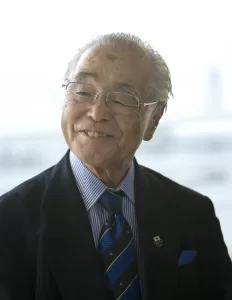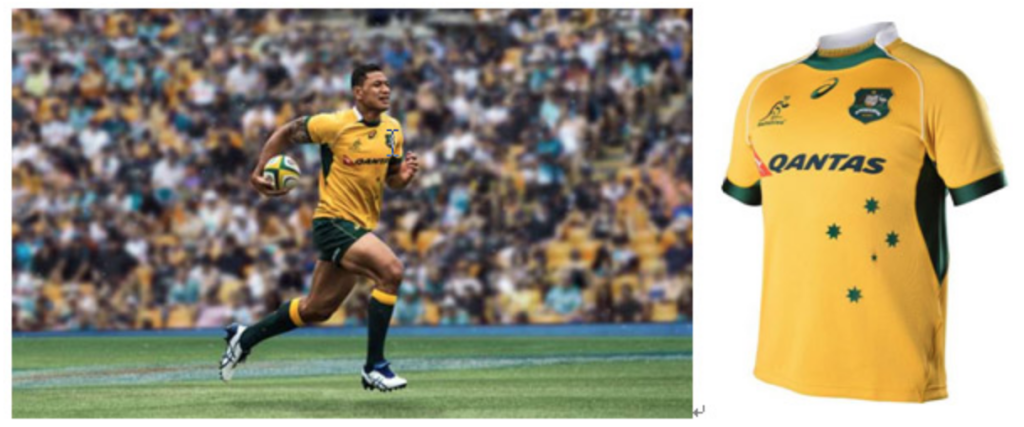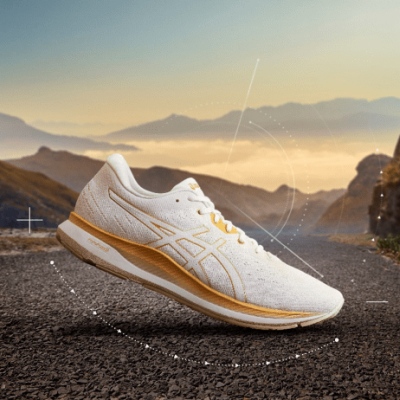ASICS is an esteemed sportswear and equipment brand founded in 1949 that has long been at the forefront of athletic performance. By focusing on innovation, quality, and functionality, ASICS has quickly earned itself a prominent presence within sports culture worldwide, catering to athletes of all levels and disciplines.
This article will give you all the knowledge you need about ASICS, from its history and achievements to its groundbreaking technologies and ongoing efforts to help athletes meet their goals. So let’s dive right in!
1940s: The Birth of ASICS
In the aftermath of World War II, Kihachiro Onitsuka established Onitsuka Shokai in Kobe, Japan, with just two employees and a modest capitalization of $300,000. Although initially established as a small enterprise, Onitsuka eventually outgrew this initial status to transform into Onitsuka Co. Ltd.


Fast forward to the 1970s, and Onitsuka Co. Ltd. reached a critical turning point when they adopted ASICS, an acronym derived from the Latin proverb “Anima Sana In Corpore Sano,” meaning “A Healthy Mind in a Healthy Body,” inspired by Kohei Hori, one of Mr. Onitsuka’s fellow war comrades during World War II who highlighted physical fitness’ connection to mental well-being.
ASICS took this philosophy of athletic footwear design seriously and dedicated itself to crafting it, giving athletes and fitness enthusiasts every chance to excel while safeguarding overall health and well-being.
1950s: Revolutionizing Athletic Footwear
During his founding tenure, Kihachiro Onitsuka was determined to establish ASICS on a path of innovation. On September 28, 1950, Onitsuka unveiled his inaugural sneaker for basketball, setting the pace for groundbreaking advancements that followed over time.
In 1953, Onitsuka made its mark by unveiling the Marathon TABI shoe, specifically created to address marathon running’s unique demands. At the same time, the Tiger Mark MARUP relay race shoe also debuted, featuring fatigue-reducing features and performance optimization technologies that would elevate Onitsuka to new heights of fame. In 1954, Onitsuka made history when they introduced nylon fibers into their shoe construction for the first time. This monumental achievement enhanced durability and water resistance while revolutionizing the performance capabilities of athletes worldwide.
ASICS was again at the forefront of innovation when they unveiled wrestling shoes in 1955, garnering instantaneous accolades for quality and design. Building upon this success, they introduced synthetic rubber sponge sole shoes in 1956, further strengthening their position as leaders in athletic footwear.
ASICS made significant strides during the 1950s with its innovations that set new standards in athletic footwear design, setting an example to push limits and empower athletes worldwide.

1960s: The Golden Age of Onitsuka
Onitsuka, an industry pioneer in athletic footwear, made waves with their Magic Runner Marathon shoe in the 1960s. This innovation received widespread praise among marathon runners worldwide—Kenji Kimihara, for example, holds an International Marathon silver medal to his name.
At this time, Onitsuka took bold strides into various sports categories and product lines, offering tailored shoes for gymnastics, soccer, fencing, and volleyball, which were met with tremendous excitement by athletes all over the globe.
In 1964, Onitsuka made history when they introduced their groundbreaking Rotation 6 volleyball shoe, tailored explicitly to international six-a-side formats. This milestone development demonstrated their dedication to meeting specific demands across different sports.
As part of their tireless pursuit for progress, Onitsuka introduced the CORTEZ training shoe in the United States, later rebranded as the Tiger Corsair, which featured three-layer cushioning to ensure maximum comfort during intensive training sessions.
Onitsuka established itself in the 1960s by revolutionizing athletic footwear through its quest for excellence and dedication to meeting athletes’ needs. Their commitment to innovation and performance laid the groundwork for continued success for decades.
1970s: Pioneering Innovation and Global Expansion
Onitsuka Co., Ltd.’s success during the 1970s can be measured partly by its revolutionary footwear products that changed the athletic footwear industry and spread its global reach.
Onitsuka displayed innovation through their INJECTOR series and Ski jump shoes, winning over athletes and enthusiasts worldwide. These groundbreaking creations showcased Onitsuka’s dedication to pushing boundaries and setting new standards in performance footwear.
The brand made history when it unveiled the Gehrig Series baseball cleat in 1973. Boasting an innovative synthetic resin sole and interchangeable spikes, the Gehrig Series provided unparalleled traction and agility on the diamond, earning widespread praise from players and coaches alike.
Building on their success, Onitsuka forayed into track and field sportswear in 1974 by unveiling their PAW line of track wear. Concurrent with this groundbreaking apparel was their launch of the Tiger Paw spike shoe, which showcases their comprehensive approach to athletic development.
However, the turning point came with the merger between Onitsuka and JELENK in 1977 to create ASICS Corporation. This union represented more than just business consolidation; it encapsulated ASICS Corporation’s core philosophy of nurturing customers’ mental and physical well-being. With this transformative step taken by ASICS, they embraced a holistic approach to athletic performance by emphasizing mental-physical harmony as a critical factor in athletic performance.
1980s: ASICS Innovations
ASICS was an innovative force in athletic footwear during the 1980s, and one notable achievement came in 1985 with its revolutionary marathon shoe. This groundbreaking design boasted nylon rip-stop taffeta upper material and an RB Dulite sole, clearly showing their dedication to pushing boundaries and industry practices.
ASICS set its sights beyond just marathon shoes when it set its sights on expanding globally. That same year, ASICS Tiger Oceania Pty. Ltd. was founded in Sydney, Australia, to further its goal of reaching athletes worldwide while providing cutting-edge footwear solutions.
As the decade progressed, ASICS was at the forefront of innovation. ASICS introduced their revolutionary Duosole outsole technology, proving their dedication to athlete performance. This model provided superior lightweight flexibility with exceptional grip, something runners no longer had to compromise on when searching for light options due to ASICS’ forward thinking.
1990s: Trailblazing the Athletic Footwear Industry
ASICS was an industry pioneer during the dynamic 1990s and enjoyed unprecedented growth during this athletic footwear innovation and advancement era. Key landmarks for ASICS included establishing the ASICS Research Institute of Sports Science in Kobe City; this state-of-the-art facility provided cutting-edge research and development of sports gear while solidifying ASICS’ commitment to innovation and progress.
In 1992, a vital transition occurred within ASICS leadership. Seiji Mihara assumed the role of president and led the company’s strategic direction. At the same time, Kihachiro Onitsuka became Chairman of the Board, playing a critical role in shaping ASICS’ success and advancing it to new heights.
ASICS introduced a brand-new promotional logo in 2016 as part of its transformation. The logo featured a stylized letter ‘a,’ symbolizing unlimited speed and the dynamic nature of sports. This bold and distinctive emblem epitomized ASICS’ commitment to providing high-performance products that allow athletes to exceed their limits.
ASICS began its pursuit of excellence by unveiling the SUKU2 kids’ shoe in 1997, explicitly designed to support healthy foot development among young users. It showcased ASICS’ commitment to creating innovative solutions for athletes of all ages by providing comfort, durability, and optimal foot development early to instill a love of sports and an active lifestyle.
2000s: Innovating Performance and Empowering Athletes
ASICS, an undisputed power in the sports industry, made remarkable advances during the 2000s by reaching milestones and pushing athletic excellence further than ever.
Naoko Takahashi’s triumph in the 2000 International Women’s Marathon highlighted ASICS’ commitment to producing high-performance footwear, with their Marathon Soree Japan shoe playing an instrumental role in her victory.


In 2001, ASICS underwent a dramatic leadership transition when Kiyomi Wada assumed the responsibilities of President and Representative Director. Guided by his vision of “Revolution and Change,” Wada propelled ASICS towards new heights of success. To celebrate their enduring legacy and the power of sports as unifiers, ASICS also revised their slogan to emphasize this truth.
ASICS proved its commitment to heritage and style by reintroducing the legendary Onitsuka Tiger brand in 2002, leading to the widespread success of timeless models like the Mexico 66, Ultimate 81, and Nippon 60 that instantly caught on among fashion-minded athletes as well as sneaker enthusiasts alike.
As ASICS sought to enhance customer service and customization, they opened the ASICS Store in Tokyo. Not only could customers choose from their wide selection of products, but they were also provided with personalized shoe selection services tailored to individual foot types and running styles.
Leadership transitions occurred at ASICS in 2008, when Motoi Oyama took the position of President and Kiyomi Wada was appointed Chairman of the Board. These shifts demonstrated ASICS’ dedication to constant expansion and transformation.
2010s: Defining Sports Excellence
ASICS, an iconic sports brand known for athletic excellence, made significant strides in the 2010s.
ASICS sought to strengthen its position in rugby by becoming an official supplier for the South African Rugby Union (SARU) and the Australian Rugby Association (ARU). Through these partnerships, ASICS provided top-quality apparel and footwear to both teams, furthering their dedication to supporting athletes in their quest for greatness.

The 2010s saw ASICS further its global expansion as it opened notable flagship stores around the globe. Most notable was Tokyo’s ONITSUKA TIGER Omotesando store, which offered sneaker enthusiasts a haven while highlighting ASICS’ rich heritage. Furthermore, ASICS Regent Street Flagship cemented its place within an energetic sports capital like London.
ASICS celebrated the centennial birth anniversary of Kihachiro Onitsuka in 2018 by unveiling unique models and apparel that paid homage to his positive energy and contributions, honoring not only their roots but also reiterating his values of passion, innovation, and relentless pursuit of excellence.
2020s: A New Era of Leadership and Growth
ASICS, the well-recognized sportswear and athletic equipment company, took an exciting new turn in 2022 by making a strategic management transition. Yasuhito Hirota assumed multiple key positions, including President, CEO, COO, and Representative Director, while Motoi Oyama also took Chairman and Director roles, forming an unstoppable leadership duo to steer ASICS towards an ever more vibrant future.
ASICS has undertaken a management reorganization, signaling its commitment to realizing its ambitious plans and driving sustained growth through the 2020s. Under the leadership of their new team, they hope to discover all the strategic objectives outlined in their 2023 midterm plan and elevate company performance to new heights.

Conclusion
ASICS remains at the forefront of athletic excellence, boasting an impressive history, a vast product lineup, and an ongoing commitment to improvement. Whether you’re an elite athlete or enjoy staying active, ASICS provides all the gear and support necessary for optimal performance. Embracing its core philosophy of a sound mind in a sound body, ASICS continues to inspire athletes worldwide and continue its legacy of greatness.
